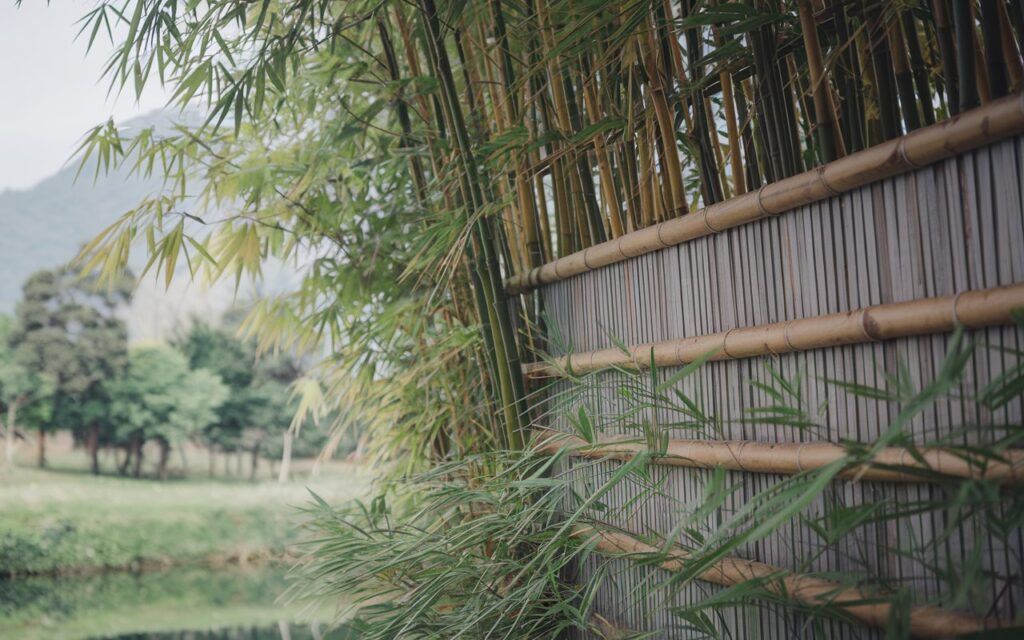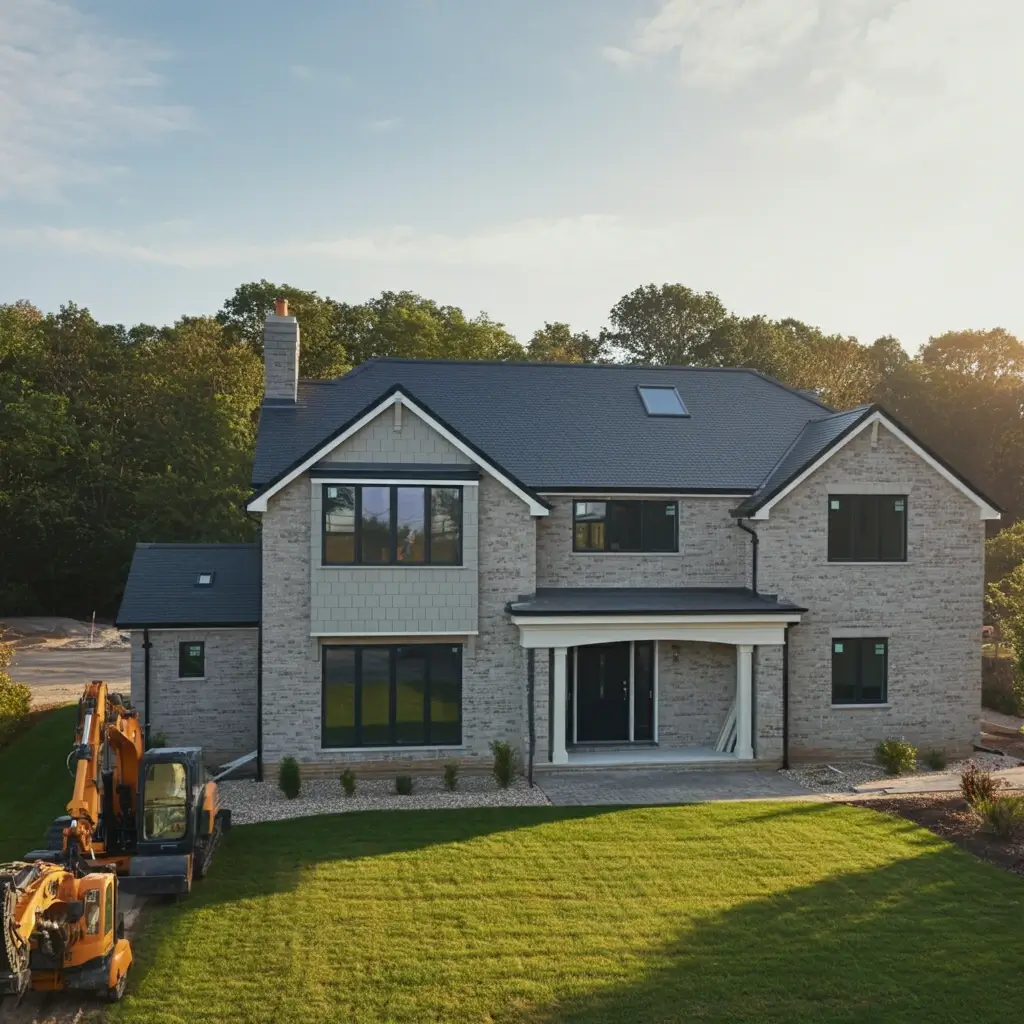Section 1 : The Best Privacy Plants: 10 Fast-Growing Choices for Every Garden
Section 2 : Planting and Maintaining Your Privacy Screen
Section 3 : Best Privacy Plants for Small Spaces and Urban Yards
The Best Privacy Plants: 10 Fast-Growing Choices for Every Garden

Creating a natural barrier between your outdoor space and the outside world can be both beautiful and practical. Choosing the best privacy plants to frame your property can give you that much-needed seclusion without sacrificing aesthetic appeal. Whether you’re looking for a quick-growing hedge, tall evergreens, or vibrant flowering shrubs, this guide will help you select the perfect plants to transform your garden into a private sanctuary.
1. Bamboo: The Fast-Growing Natural Wall
If you’re after privacy in record time, bamboo should top your list. Known for its rapid growth, bamboo is one of the best privacy plants for those who want to create a tall, lush screen quickly. Depending on the species, bamboo can shoot up several feet in just one season. It’s perfect for both tropical and temperate climates, making it an adaptable choice.
Bamboo’s dense structure also provides excellent sound insulation, dampening any outside noise that might seep into your garden. However, bamboo can spread aggressively, so if you choose this plant, consider using root barriers or select a clumping variety like Fargesia, which grows in a more controlled manner.
Personal Tip: A friend of mine planted bamboo to create a quick barrier between their yard and a busy road. Within a year, it was tall enough to give them the peace and privacy they were craving.
2. Arborvitae: The Evergreen Giant
Another favorite among the best privacy plants is arborvitae. This dense, evergreen plant provides year-round privacy and grows relatively quickly, reaching heights of 15 to 20 feet. Its thick foliage is perfect for blocking both sight and sound, making it an ideal choice for busy neighborhoods or homes near main roads.
Arborvitae thrives in various climates but performs particularly well in cooler, temperate regions. With its low-maintenance needs and reliable growth, it’s no wonder arborvitae is a go-to choice for those wanting a simple, natural privacy solution.
Creative Insight: Think of arborvitae as nature’s version of a green skyscraper — tall, imposing, and utterly effective at blocking everything from view. It’s like planting a living fortress around your yard.
3. Leyland Cypress: The Quick Shield
For those needing a tall screen in a short amount of time, Leyland cypress offers rapid growth and dense foliage. This evergreen can grow up to 3 feet per year, making it one of the fastest-growing options for privacy. Reaching heights of over 60 feet, it’s perfect for large properties and wide-open spaces.
The dark green needles of Leyland cypress provide a classic, timeless look. This tree is also fairly drought-tolerant once established, making it an excellent option for drier regions. Just be sure to give it plenty of room to grow, as its massive size can overwhelm small gardens.
4. Boxwood: The Formal Hedge
If you’re seeking a more refined, formal look, boxwood is among the best privacy plants for crafting a well-manicured hedge. Known for its dense, small leaves, boxwood is easy to shape and maintain, making it ideal for those who prefer a structured garden. It’s a slower grower than bamboo or Leyland cypress but makes up for it with its classic, polished appeal.
Boxwood thrives in various climates but prefers well-draining soil and partial shade. Once established, it requires minimal upkeep, needing just an occasional trim to keep its shape.
5. Japanese Holly: Year-Round Coverage
Another classic hedge option, Japanese holly (Ilex crenata) offers year-round coverage with its small, shiny leaves. This dense, evergreen shrub is a fantastic alternative to boxwood, especially for those living in cooler climates. Growing up to 10 feet tall, Japanese holly creates a solid barrier without being too overwhelming.
Its berries add an extra touch of color during the winter months, attracting birds and wildlife to your garden while still maintaining its privacy functions.
6. Privet: The Classic Hedge
For centuries, privet hedges have been used to create formal barriers in gardens and estates. Privet grows relatively quickly, reaching heights of 10 to 15 feet, and can be trimmed into any shape you desire. Its dense foliage provides excellent coverage, and in the spring, small white flowers bloom, adding a subtle scent to your garden.
Privet is highly adaptable, thriving in most soil types and climates. Just be aware that it can be invasive in some regions, so check local regulations before planting.
7. Red-Tipped Photinia: A Splash of Color
If you want privacy and a splash of color, red-tipped photinia might be the perfect plant for your garden. This evergreen shrub produces stunning red new growth in the spring, which gradually turns green as it matures. Growing up to 15 feet tall, red-tipped photinia creates a thick barrier, ideal for blocking views while adding visual interest.
Photinia prefers full sun but can tolerate partial shade. It’s also drought-tolerant, making it suitable for warmer climates. With proper care, this vibrant shrub will brighten your garden while ensuring your privacy.
8. Viburnum: The Versatile Shrub
Viburnum is a highly versatile shrub that offers a variety of privacy solutions depending on the species you choose. Some viburnums grow as tall as 20 feet, while others form low hedges. Their dense foliage creates an effective screen, and many species produce beautiful, fragrant flowers in the spring.
Viburnum is relatively low-maintenance and can thrive in a variety of soil types and climates. It’s also pest-resistant, making it an easy choice for those looking for a hassle-free privacy plant.
9. Bamboo Palm: Tropical Elegance
If you’re looking for a tropical solution, the bamboo palm brings both elegance and privacy to your garden. Unlike traditional bamboo, bamboo palms grow in more of a clustered, bushy formation. They reach heights of 10 to 12 feet and are perfect for creating an exotic privacy barrier in warm, tropical climates.
Bamboo palms thrive in shady areas, making them perfect for gardens with filtered light. Their lush, green fronds add a sense of tranquility and provide the seclusion you need for an outdoor retreat.
10. Loropetalum: The Vibrant Screen
For a pop of color that doubles as a privacy screen, consider loropetalum. This evergreen shrub features dark purple foliage year-round, with vibrant pink flowers blooming in the spring. Growing up to 12 feet tall, loropetalum creates a striking visual barrier while providing the privacy you desire.
This shrub thrives in full sun to partial shade and prefers well-draining soil. It’s also relatively drought-tolerant once established, making it a great choice for warmer regions.
Conclusion:
Choosing the best privacy plants for your garden depends on several factors, including climate, growth rate, and personal preferences. Whether you prefer the towering heights of bamboo and Leyland cypress or the structured elegance of boxwood and privet, there’s a privacy plant out there to suit every style and need. With the right selection, you can create a beautiful, natural barrier that transforms your garden into a private oasis.
Planting and Maintaining Your Privacy Screen
After selecting the best privacy plants for your specific climate, the journey toward creating a lush, private oasis has only just begun. Proper planting techniques, ongoing maintenance, and strategic care will ensure that your green screen not only thrives but also provides maximum coverage. This section will guide you through the crucial steps to achieve a robust, long-lasting privacy screen.
1. Proper Planting Techniques for Privacy Plants
Planting the best privacy plants is a delicate balance between precision and patience. The key to success lies in spacing, depth, and plant orientation.
- Spacing: Correct spacing is paramount to ensuring that your plants grow to form a dense, impenetrable barrier. For instance, bamboo, known for its rapid growth, should be spaced 3-5 feet apart, depending on the variety. Clumping bamboo, which is non-invasive, can be planted closer together, while running bamboo should be given more room due to its aggressive spread. On the other hand, boxwoods or privet hedges, which grow slower and denser, thrive when spaced about 1.5-2 feet apart to form a compact, uniform screen. When selecting the best spacing for your privacy plants, it’s crucial to consider the mature width of the plant. If planted too closely, the roots might compete for nutrients, stunting growth and affecting plant health. If planted too far apart, it could take years before they provide the necessary privacy. A good rule of thumb is to follow nursery or botanical guidelines for mature plant width to achieve an optimal hedge.
- Planting Depth: The depth of the hole is equally important. When planting shrubs or trees, the root ball should be at ground level or slightly above it to prevent waterlogging. Digging the hole twice as wide as the root ball will give roots enough room to establish themselves without stress. For taller privacy plants like Leyland cypress or emerald arborvitae, deep, well-drained soil ensures they grow straight and tall, forming a sturdy privacy wall.
- Orientation: For optimal privacy, plant rows of trees or shrubs in staggered patterns. This will allow each plant more room to grow and fill gaps more quickly. Additionally, it creates a layered, natural look, adding beauty to the practical benefits.
2. Watering and Fertilization for Strong Growth
Even the best privacy plants need the right nutrients and watering schedule to reach their full potential.
- Watering: While some plants like oleander or bamboo are highly drought-resistant once established, most privacy plants need consistent watering, especially during their first few years. A newly planted tree or shrub needs deep watering to encourage roots to grow downward, ensuring long-term stability. For most varieties, water once or twice a week during the growing season, reducing frequency as the plants mature. Bamboo and Leyland cypress are particularly thirsty plants in their early years, requiring more frequent watering. However, once they have matured, these species can survive on minimal watering, making them both a practical and aesthetically pleasing choice. Drip irrigation or soaker hoses are ideal for watering privacy plants as they deliver moisture directly to the root zone, minimizing evaporation and preventing over-watering the foliage. Overwatering can lead to root rot or mildew, particularly in denser species like hedges.
- Fertilization: Feeding your plants is essential for promoting growth and achieving a lush, dense barrier. Organic compost, mulch, or slow-release fertilizers are recommended for most privacy plants. For example, Thuja Green Giants, one of the best privacy plants, benefit from bi-annual feeding with a balanced, slow-release fertilizer to maintain their fast-growing and healthy green foliage. Fertilizers rich in nitrogen help promote foliage growth, while phosphorus strengthens roots. Leyland cypress, privet hedges, and bamboo all respond well to this type of care. Organic fertilizers such as bone meal or fish emulsion add nutrients while improving soil structure. Remember to fertilize during the spring and fall to encourage vigorous growth through the seasons.
3. Pruning for Maximum Coverage and Health
Regular pruning is a key step in maintaining the shape, density, and health of your best privacy plants.
- Hedge Plants: Hedges like boxwood and privet require regular trimming to maintain a uniform appearance and ensure dense coverage. Trimming hedges encourages new growth, which makes them fuller over time. A light trimming every few months will keep your hedge looking neat without stressing the plants. When trimming hedges, start from the top and move downward, making sure to keep the base slightly wider than the top. This shape allows sunlight to reach the entire plant and promotes even growth.
- Bamboo: Bamboo requires a different pruning strategy. It’s one of the fastest-growing plants, which can be both an asset and a challenge. For clumping varieties, pruning should focus on removing dead or weak canes at the base to encourage strong, new growth. Running bamboo should be contained, and any spreading shoots pruned back immediately to avoid invasion. If left unchecked, bamboo can quickly overwhelm your yard, so trimming is key to maintaining control while still benefiting from its natural height and screening abilities.
- Fast-Growing Trees: If you’ve chosen fast-growing trees like Leyland cypress or emerald arborvitae, pruning is more about shaping and controlling height. Trim these trees annually to maintain a manageable height and promote lateral growth for a fuller screen. Avoid cutting too much of the tree at once, as this can shock the plant and slow its growth. By incorporating proper pruning techniques, you not only maintain the health of your plants but also ensure that your privacy screen stays full and effective.
4. Mulching and Soil Care
Mulching provides multiple benefits for your privacy plants, including moisture retention, weed suppression, and soil temperature regulation. Applying a 2-3 inch layer of organic mulch, such as wood chips or shredded bark, around the base of your plants will help retain moisture and prevent weeds from competing for nutrients.
Additionally, mulching enriches the soil as it breaks down, improving drainage and root health. This is especially beneficial for plants like bamboo and boxwood, which thrive in well-drained soils.
Before planting, amending the soil with organic matter like compost or manure will help improve its structure, particularly in clay-heavy soils. Plants like privet and arborvitae prefer loamy soils that allow for easy root expansion and drainage. Ensuring the soil is rich in organic material before planting will give your privacy plants the best start possible.
5. Dealing with Common Issues: Pests, Diseases, and Maintenance Challenges
No matter how carefully you plant and maintain your privacy screen, challenges can still arise. Some of the best privacy plants are susceptible to pests and diseases, so it’s important to know how to address these issues before they become significant problems.
- Pests: Common pests like aphids, spider mites, and caterpillars can wreak havoc on plants like boxwood and privet. Keep an eye out for leaf discoloration, holes, or webbing, which can indicate pest infestation. Using organic insecticidal soaps or neem oil can help control pests without damaging your plants or the surrounding ecosystem.
- Diseases: Fungal diseases like powdery mildew and root rot can affect many types of privacy plants, particularly if they are overwatered or planted in poor-draining soil. Arborvitae and boxwood are especially prone to these issues. Proper spacing, watering practices, and maintaining good airflow between plants can reduce the risk of disease. If a plant does become infected, remove the affected areas immediately and treat with fungicide if necessary.
- Overgrowth: Some of the best privacy plants, like bamboo and Leyland cypress, grow incredibly fast and can quickly become overgrown if not maintained regularly. For fast-growing plants, it’s essential to have a pruning schedule in place. Left unchecked, these plants can crowd each other out or grow into other areas of your garden, reducing their effectiveness as a privacy screen.
6. Long-Term Care and Seasonal Adjustments
Taking care of your privacy screen requires long-term commitment and seasonal adjustments. In colder climates, some plants like bamboo and arborvitae might require winter protection, especially during their first few years. Wrapping the plants in burlap or using mulch around the base can help protect roots from freezing.
Conversely, in hot, dry climates, privacy plants like oleander or juniper might require more frequent watering during the summer months to prevent drought stress. Keeping an eye on your local climate and adjusting your care routine accordingly is crucial for ensuring the longevity of your privacy plants.
By staying on top of seasonal changes and addressing issues as they arise, your privacy screen will continue to thrive and provide the barrier you need.
Conclusion
Creating a dense, healthy privacy screen with the best privacy plants is an investment that requires thoughtful planting and consistent care. By spacing your plants correctly, providing regular water and fertilizer, and staying vigilant with pruning and pest management, your green wall will flourish, offering beauty, shade, and—most importantly—privacy for years to come.
Best Privacy Plants for Small Spaces and Urban Yards
Living in a bustling urban area or having a compact outdoor space doesn’t mean you have to sacrifice privacy. With a little creativity and the right selection of plants, you can craft a private sanctuary even in the smallest of spaces. From vertical gardening to container planting, there are numerous solutions tailored to meet the needs of urban dwellers.
Let’s explore some of the best privacy plants that are perfect for small yards, patios, balconies, or urban landscapes, and how you can use them to create a green retreat.
1. Vertical Gardening with Climbers
If you’re limited by ground space, why not take your garden upward? Vertical gardening is not only a space-saving solution but also an aesthetically pleasing way to introduce privacy. Certain climbing plants thrive in small spaces while delivering excellent coverage for fences, walls, and trellises.
English Ivy (Hedera helix), for instance, is one of the best privacy plants for small urban gardens. Known for its vigorous growth, it clings tightly to walls and can quickly transform a dull brick or wooden fence into a lush green barrier. Its dense foliage creates a living curtain, providing not only privacy but also a cooling effect for the surrounding area. In fact, ivy is frequently used in urban environments to reduce heat island effects, making it an eco-friendly choice.
Another fantastic option is Clematis. This climbing plant offers a wide range of varieties, from evergreen species that provide year-round coverage to flowering species that bring vibrant color to your outdoor space. Clematis grows well on trellises or arches, and its cascading blooms can create a charming, natural screen.
For an edible twist, consider growing grapevines (Vitis spp.). Not only do they provide excellent privacy with their dense leaves, but you’ll also enjoy fresh grapes during the growing season. Grapevines can thrive in containers or planted directly in the ground, and with regular pruning, they are perfect for small spaces.
Key Tips for Climbing Plants in Urban Gardens:
- Use sturdy trellises, lattices, or wall supports to guide climbers.
- Ensure adequate sunlight for flowering varieties like clematis.
- Regular pruning is essential to control the growth and maintain the shape.
2. Compact Shrubs and Trees for Narrow Spaces
If you’re looking for more structure in your privacy screen, compact shrubs and trees are excellent alternatives to climbing plants. Even in narrow urban yards, there are several small-growing varieties that provide dense foliage without taking up excessive space. These shrubs and trees are some of the best privacy plants for limited spaces due to their height and slim growth habits.
The Dwarf Boxwood (Buxus sempervirens ‘Suffruticosa’) is an ideal choice for tight spaces. Its dense, evergreen foliage creates a compact, formal hedge that requires minimal maintenance. With a little bit of trimming, boxwood can be shaped to fit nearly any space. It’s perfect for those who want privacy without sacrificing a polished, sophisticated look.
Another option is the Japanese Privet (Ligustrum japonicum). This shrub is evergreen in mild climates and offers quick growth with dense coverage. In a small urban yard, privet can be shaped into narrow hedges that won’t encroach on valuable outdoor space, while still providing an effective screen from prying eyes.
For those interested in trees, the Dwarf Arborvitae (Thuja occidentalis ‘Smaragd’) is a superb choice. Arborvitae are naturally slim and tall, making them some of the best privacy plants for narrow spaces. The ‘Smaragd’ variety stays compact, reaching heights of 12 to 14 feet but remaining only 3 to 4 feet wide, creating a natural green wall with minimal pruning required. Arborvitae is also hardy, able to withstand colder climates, and remains green year-round.
Compact Trees and Shrubs to Consider:
- Sky Pencil Holly (Ilex crenata ‘Sky Pencil’) – A narrow evergreen shrub that can grow up to 10 feet tall while remaining only 2-3 feet wide.
- Dwarf English Laurel (Prunus laurocerasus ‘Otto Luyken’) – A hardy evergreen shrub that provides a low-growing hedge perfect for tight spaces.
- Hornbeam (Carpinus betulus) – A deciduous tree with a compact growth habit, ideal for pleaching or training into narrow screens.
3. Container Gardening for Flexibility
If you’re working with a balcony, patio, or rented space, container gardening offers unparalleled versatility. By planting privacy plants in pots, you can move them around as needed, ensuring maximum coverage and privacy no matter the space.
Bamboo is one of the best privacy plants for container gardening due to its fast growth and natural screening capabilities. Opt for clumping varieties like Fargesia to avoid the spread of invasive roots. Bamboo thrives in pots, especially when given adequate water and nutrients, and its tall, dense canes create an immediate sense of enclosure.
Similarly, Ficus plants such as Ficus benjamina and Ficus elastica (rubber plant) are ideal for urban balconies or patios. They can be grown in large containers and easily pruned to maintain the desired shape and size. Their broad leaves create a thick visual barrier that is perfect for ensuring privacy in densely populated areas.
Another adaptable choice for container gardening is Dwarf Olive Trees (Olea europaea). Not only do they provide a Mediterranean charm, but they also produce a dense canopy of silver-green foliage. In containers, these trees can be maintained at a manageable size while still offering excellent privacy and even producing fruit in the right climate.
Container-Friendly Plants for Privacy:
- Clumping Bamboo (Bambusa) – Best for pots due to its non-invasive roots.
- Ficus ‘Alii’ (Ficus binnendijkii) – A tropical plant that thrives in containers.
- Oleander (Nerium oleander) – Produces thick foliage and fragrant flowers, great for blocking out views.
4. Mix-and-Match: Combining Plants for Optimal Coverage
For those looking to create an artistic and varied privacy screen, consider combining different types of plants. Using a mix of climbers, compact shrubs, and container-grown plants not only ensures privacy but also adds layers of texture, color, and height to your garden.
Imagine the vertical growth of ivy intertwined with flowering clematis, while dwarf arborvitae and potted bamboo create depth at different levels. This dynamic approach to small-space privacy ensures that every inch of your garden is utilized while maintaining a cohesive look.
When mixing plants, it’s essential to consider their sunlight and water needs. Grouping plants with similar requirements will ensure that they thrive together. Additionally, planting evergreen species alongside deciduous ones provides year-round coverage while still offering seasonal interest.
5. Creative Solutions for Tight Spaces
Urban spaces often come with unique challenges—limited soil depth, concrete surfaces, and lack of access to natural sunlight. But these hurdles can be overcome with creative planting solutions.
For example, living walls or vertical planters allow you to grow a variety of plants without the need for ground space. These systems can be installed on exterior walls, balconies, or fences, and can be planted with a mix of herbs, flowers, and privacy plants. Succulents, ferns, and small-leaved ivy are perfect for this type of setup.
Another option is to use privacy screens made from plant-friendly materials like lattice or bamboo, and then train climbers like passionflower or star jasmine to grow up them. This method provides instant privacy while allowing plants to gradually cover the structure over time.
Final Thoughts: The Best Privacy Plants for Urban Living
Creating a private oasis in a small urban yard or balcony is not only achievable but also an exciting opportunity to get creative with your plant choices. Whether you choose to go vertical with climbers, opt for compact shrubs, or embrace the flexibility of container gardening, there are numerous options that can fit your needs.
Remember, the key to success is choosing the best privacy plants for your specific space, light conditions, and aesthetic preferences. By combining different plants and using smart gardening techniques, even the smallest urban garden can become a lush, private sanctuary.



